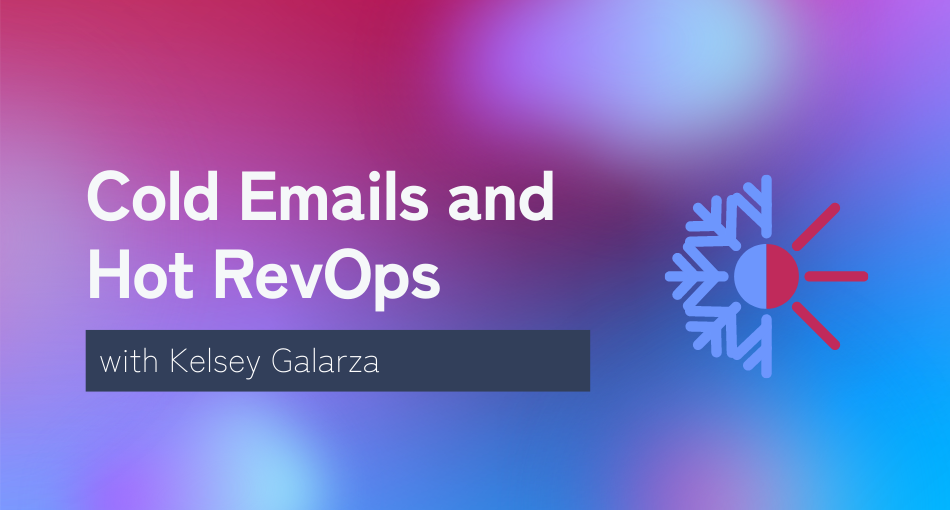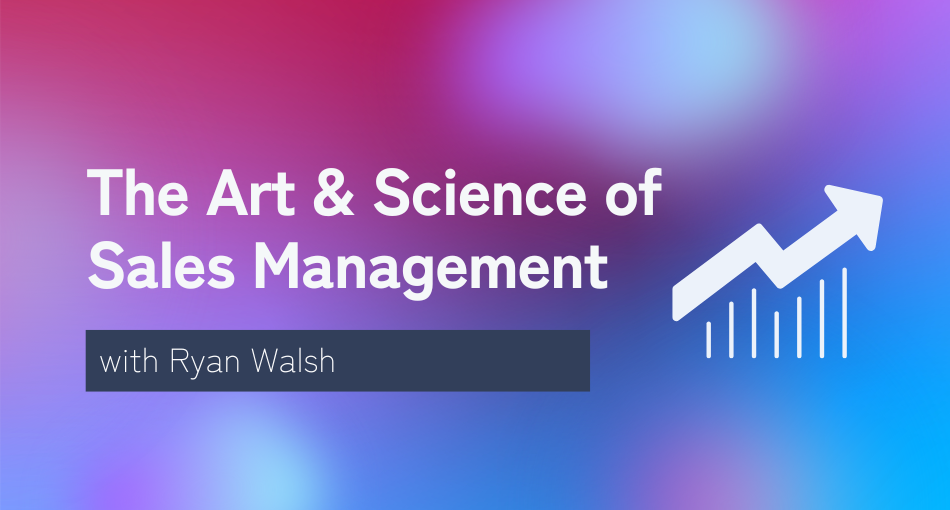 |
On this episode of the REVolution Podcast...
Kelsey Galarza joins us to talk about everything from the latest in B2B revenue to why marketing and sales has become oversaturated by technology that enables mass outreach at scale while sacrificing quality and high-value experiences. We also touch on hot topics like declining response rates for cold outreach, the overuse of third-party intent, marketing compensation, attribution, and more.
Listen now, check out the transcript, and subscribe
Read along with the episode transcript here or find and subscribe on your favorite podcast platform.
About our guest
Kelsey is a Co-Founder and Principal Consultant at Orange Marketing, a HubSpot Diamond Solution Partner working with B2B revenue teams. We’re excited for you to meet Kelsey because of her extensive background helping growing companies scale their revenue motion through the effective use of data, technology, and processes. Follow Kelsey on LinkedIn to learn more and engage with her awesome content.
Episode takeaways
The latest in B2B revenue
Kelsey kicks off our conversation by sharing more about how her firm, Orange Marketing, got its start [2:10], then we transition into the latest trends she sees impacting B2B revenue [4:38]. A major highlight includes more teams investing in a Revenue Operations (RevOps) function. She thinks we’re seeing this because more organizations are focusing on uniting previously disconnected teams and driving revenue - together. Beyond this, she’s also seeing more investment in personalization to help create a better customer experience.
Why cold outreach is so hard and content matters
From there, we begin to discuss why it’s harder than ever to capture attention. A big reason why this is happening, according to Kelsey, is all the technology enabled outreach that is occurring where it’s easy to send mass emails without a lot of strategic thought [6:10]. In some cases, Kelsey and team are seeing response rates in the fractions of one percent when people do cold outreach. She encourages everyone to think harder about the content they’re creating and sending messages that add value.
Thoughts on first-party data
Mary asks Kelsey to share her thoughts on first-party data and how organizations are approaching it given the huge investments in recent years in acquiring third-party intent [10:03]. Kelsey shares that many organizations have tons of contacts in their database they’re not treating strategically. She encourages everyone to think about treating contacts that have had engagement with more priority and shares that there are many tools to help with this versus continuing to hope that unengaged, third-party contacts are magically going to convert at higher rates.
Measuring the value of marketing and paying accordingly
We transition the conversation into talking about how important it is to know who’s on point to cover certain segments of the database [16:20]. Marketing has traditionally been focused on top of funnel contacts and that has largely been a quantity game. However, now marketing needs to focus on delivering more qualified, higher-converting prospects to sales and that requires more of a quality focus. Kelsey argues marketing should be directly compensated based on realized revenue. Then, we discuss whether adequate technology exists to support measuring marketing’s value and helping drive variable compensation [18:00]. TL;DR - it's not attribution.
Back to the basics
The conversation pivots into how what was old is new again with gifting platforms and smaller, high-value in-person events [25:00]. Ultimately, we believe marketers are going to be forced by regulations like GDPR (General Data Protection Regulation) and CCPA (California Consumer Privacy Act) to get back to the basics of activating engaged first-party data well and providing value to a smaller set of truly interested prospects. Kelsey shares that she feels like the ease of button pushing has been the death of good marketing in many ways.
CRMs and dinosaurs
Alex asks Kelsey to share her thoughts about CRM and Salesforce [34:35]. She shares that she feels like the way we talk about CRM today hasn’t really changed in the last twenty five years. Instead, she feels like some bigger organizations are finally starting to move into real-time decisioning based on CRM, but most organizations don’t have the skills, time, or resources to effectively use CRM data well.
Aligning teams to a pod concept
Mary asks Kelsey to share her thoughts on the pod concept and the recent Forrester prediction that 20% of marketing demand teams will be reporting into sales by the end of 2023 [37:55]. She’s not a huge fan of marketing reporting into sales without having a leader in place that really understands how to make it work. When you get the right leader in place, though, she thinks it can work and be a very good thing for driving revenue. Additionally, Kelsey is excited about HubSpot’s ability to be a leader in helping connect technology to create positive customer outcomes, while aligning data and internal team operations.
The art and science of selling
Alex tees up a conversation on how sellers enjoy working and the intersection of the art and science of selling and the role of data [42:30]. He asks Kelsey if she sees sellers wanting to have more insights at their fingertips so they can use technology to do more with less wasted effort. Kelsey 100% agrees that she sees things pivoting in this direction. Then, Alex talks about how the future of revenue may be about project based work across teams where alignment happens because of a shared goal and teams are able to use prioritized insights to remain focused.
Attribution.
As we wrap up, we quickly touch on the topic of attribution and ask for Kelsey’s thoughts on where it went wrong [49:35]. She neatly summarizes it by saying that “...attribution is both the problem and the solution for all of the things we just talked about.” She encourages us all to think about using attribution to make better decisions, not to decide who to pay or who gets credit.





%20(4)-1.png)
%20(1).png)